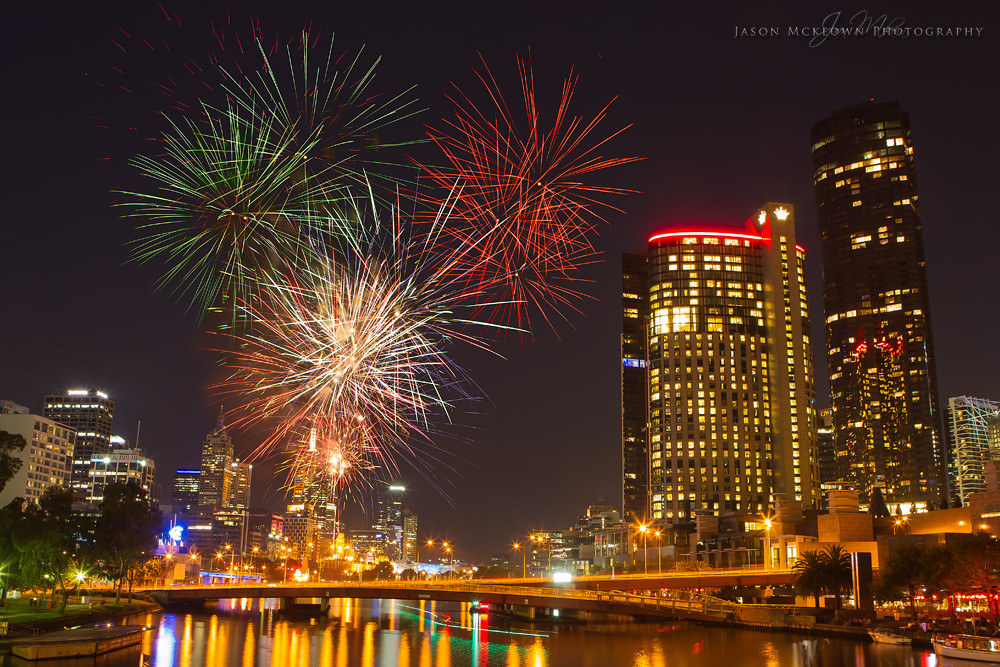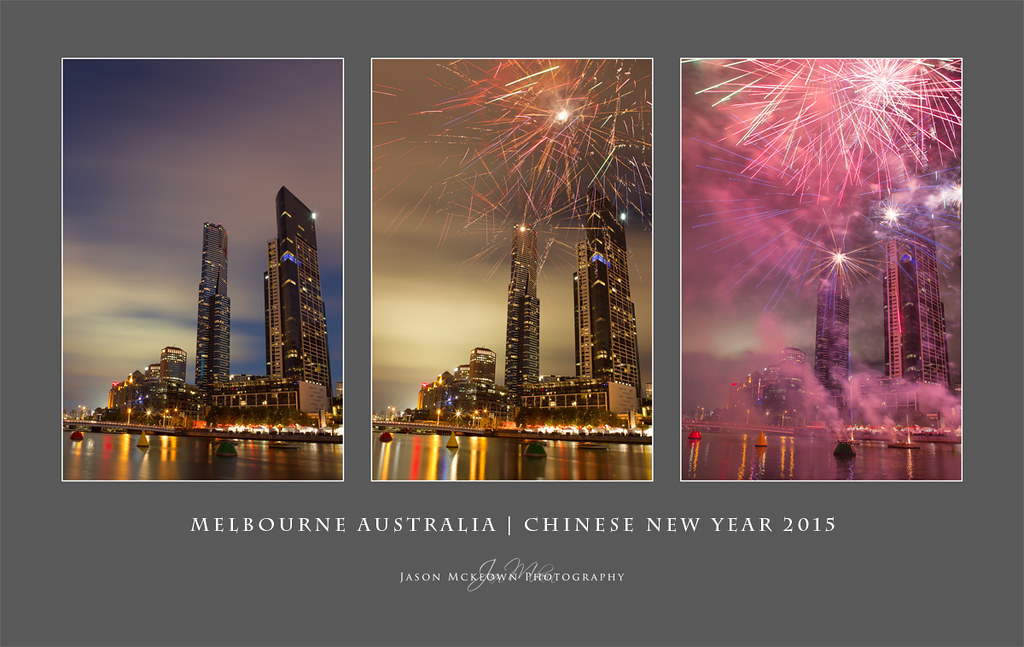Australia Day Fireworks
20 January 2016Want to learn how to photograph fireworks this Australia Day, but don’t know where to start? Here are some of my tips for capturing the perfect shot
1. Know your camera
No matter if it’s a DSLR or pocket point-and-shoot, the same thing applies – know your camera. Read your user manual. If you have never photographed in the dark, try it before the event – especially if you have never used the “manual” mode on your camera. Fireworks photography is the perfect subject to start with for experimenting.
2. Use a tripod
Or else be prepared to brace your camera against something steady. You will need to raise your camera somewhat because you don’t want to shoot straight up. You should aim toward a distant horizon of some kind.
Walk around before it gets too dark. Choose an area that will give you enough space to allow you to include not only the fireworks as they light up the sky, but also something else of interest in your frame. This could be anything – a building, bridge, or tree line.
3. Don’t be afraid to play with exposure times
To be successful at capturing not only the moment a firework explodes, but also the trails of falling light after the initial burst, you will need to set your camera to take a long exposure – anywhere from 2 to 10 seconds.
This is why a sturdy camera is a must. If your fireworks are near water, you can also capture the fireworks reflected in the water. For this type of shot, you should use a very long exposure – 30 to 45 seconds. If you have one, use a shutter release cord or a remote release to cut down on camera shake.
If you don’t have a release, make sure to hit the shutter button very gently shortly after you hear the firework shell being shot off. If your camera is not motionless, the smooth paths of light the fireworks create will appear jagged. However, that might produce an interesting effect that is just as cool.
If your camera allows it, set it to the lowest ISO possible, usually 100 or 200. Turn off auto ISO. ISO doesn’t control how much light enters the camera, but instead controls how sensitive the camera is to that light.
The lower the ISO, the less sensitive the camera is. In other words, a lower ISO will require more light to properly expose a picture than a higher ISO, and therefore allow for a longer exposure time.
4. Switch to manual focus
Auto focus is just a starting point to help you lock the focus on the plane you want to highlight. Focus on something in the distance, then set the camera to manual. Take a shot when the firework goes off, then look on the screen to judge the sharpness.
Repeat the process until the results look crisp. If you decide to zoom in or out, you will have to take the camera off manual, auto focus again, and then go back to manual.
Another option, if your camera allows it, is to set the focus point to infinity. You’re generally far enough away that you can set the lens focus to infinity and leave it there. Check the results after a couple of shots to see if this works for you.
If you want to get a close-up of a small part of the burst, you may need to adjust the focus as you zoom in. If you want to include buildings or people in the background, you may want to bring those into focus first and then shoot.
5. Don’t forget about noise reduction
In many of the newer cameras, noise reduction will be automatically activated when noise is detected in any exposure over one second. You are taking long exposure shots, so noise reduction will activate unless you turn it off.
Noise reduction is subtractive, which means that after the initial exposure, a second exposure of identical length is made with the shutter closed.
Noise from the second exposure is subtracted from the first image, leaving a noise-free image. But this means that each shot will take twice as long to be electronically transferred to the memory card. You will be able to take more shots more quickly if you turn that feature off.
6. Take advantage of post-processing
Post-processing photos of fireworks is one of the simpler aspects of creating a dramatic, vibrant composition. You may just need to make the sky blacker by enhancing the contrast or your light displays more vivid by increasing the hue/saturation.
Want to create the look of the grand finale without all the smoke and confusion? Combine several shots into one. Pick a few dramatic images, clone out any imperfections, crop them, and combine them on different layers so you can move them around.
You can place one over another and have them appear as if they were taken simultaneously by using a blending mode (Photoshop). In essence, you will blend one layer into the other so the explosions merge. You can enlarge or reduce some to create additional interest.
Whether you are a casual snapper or a photographer with a grand plan, fireworks are a good subject to shoot. The results are usually better than you had hoped for. If you follow these few simple rules, you will end up with some amazing shots of the fireworks.


